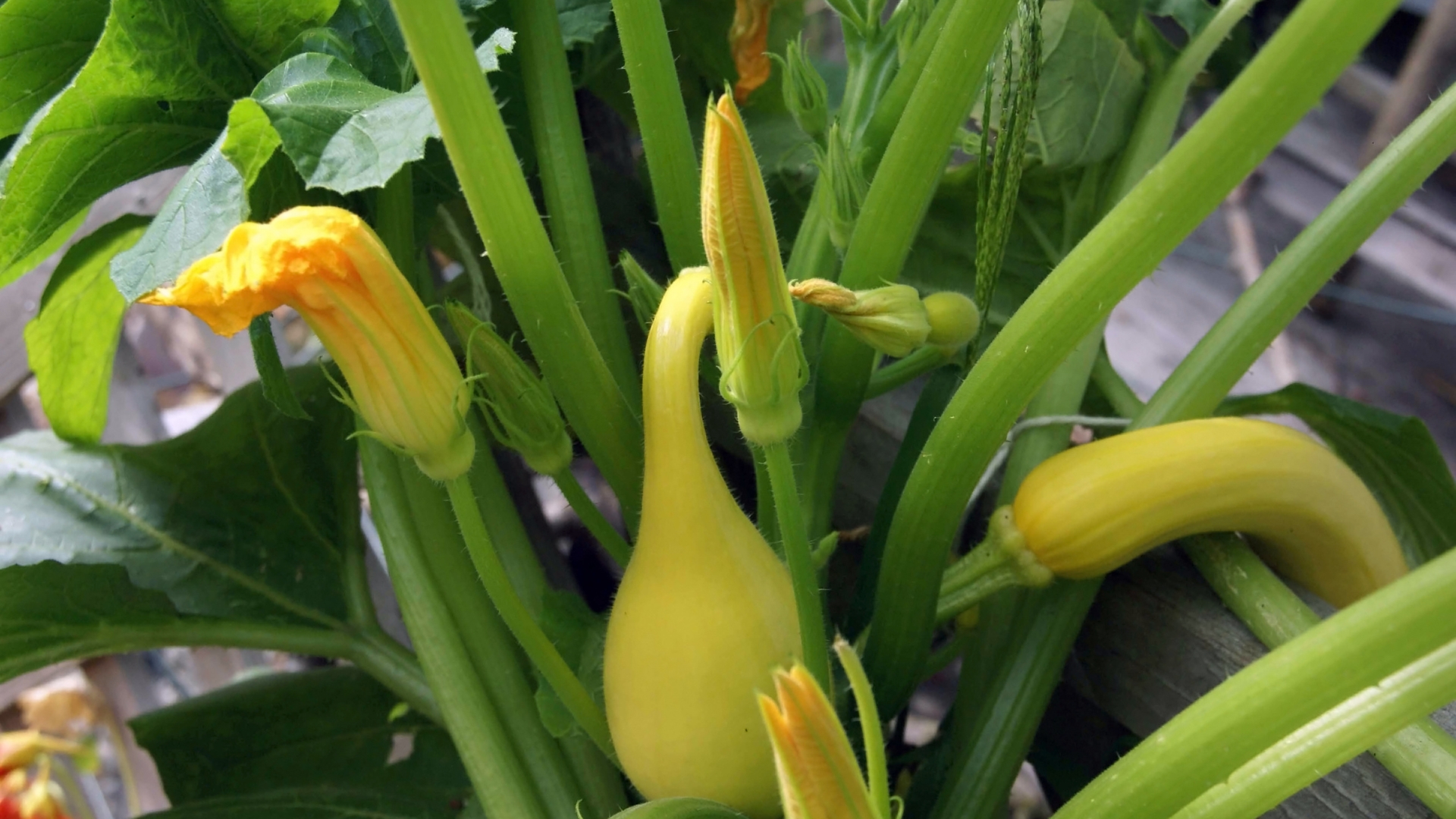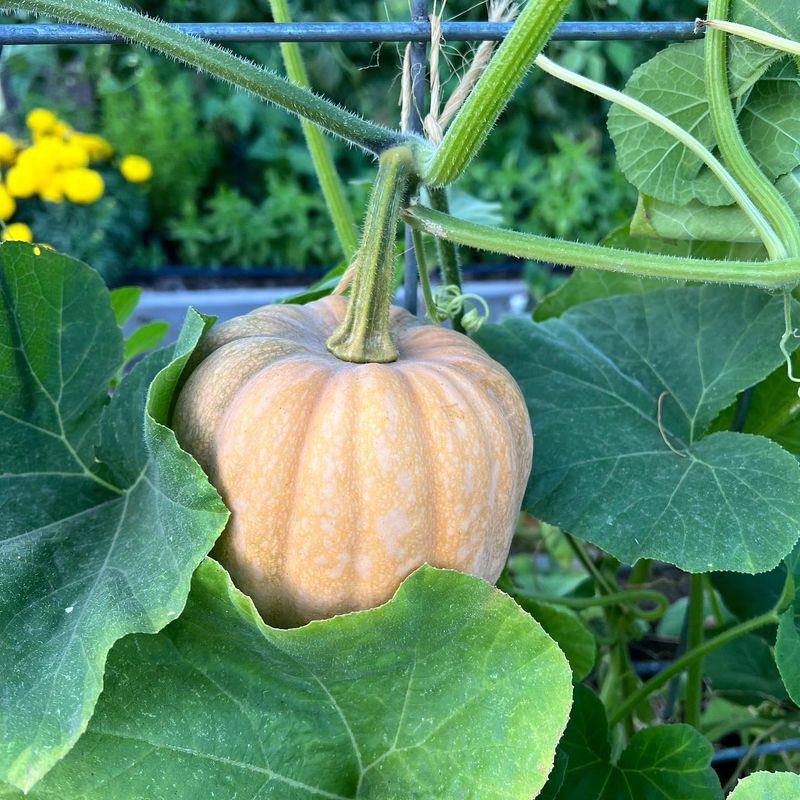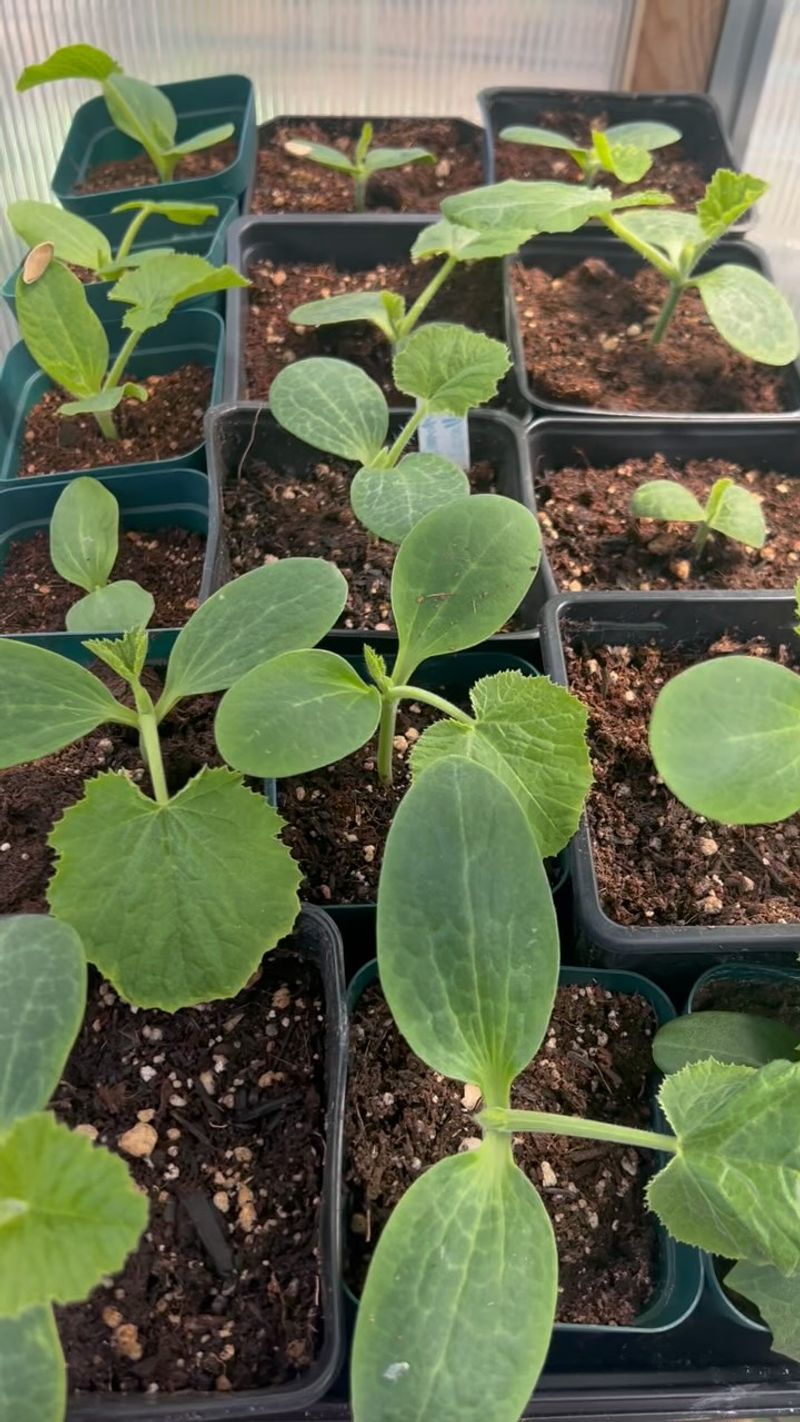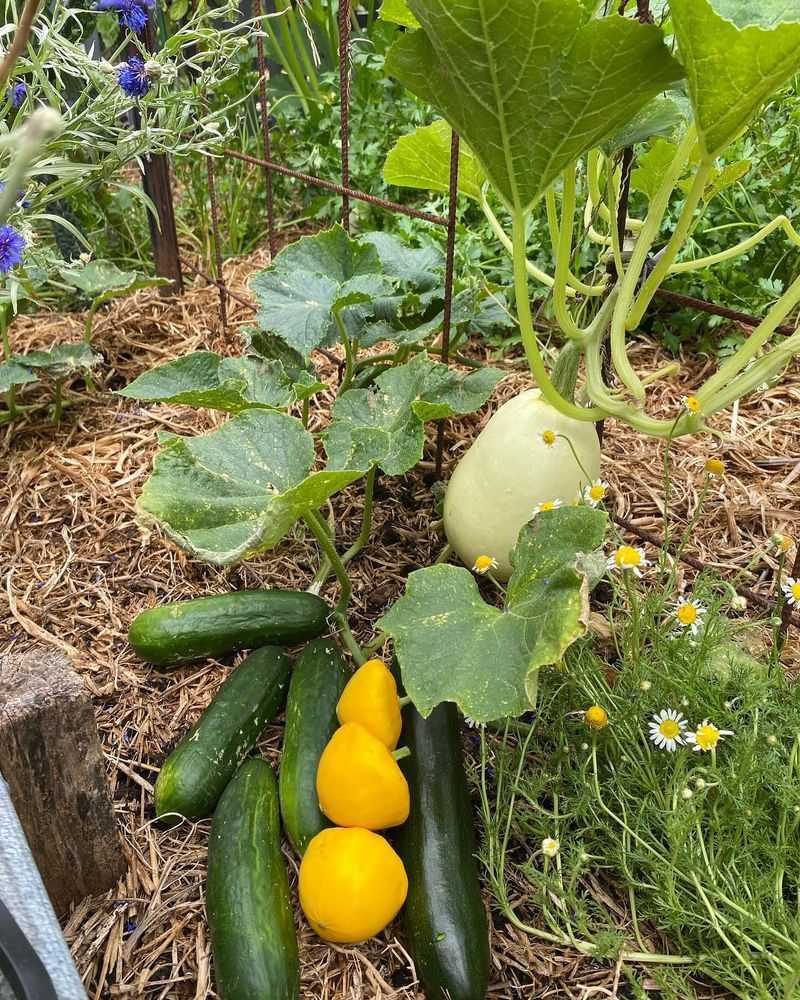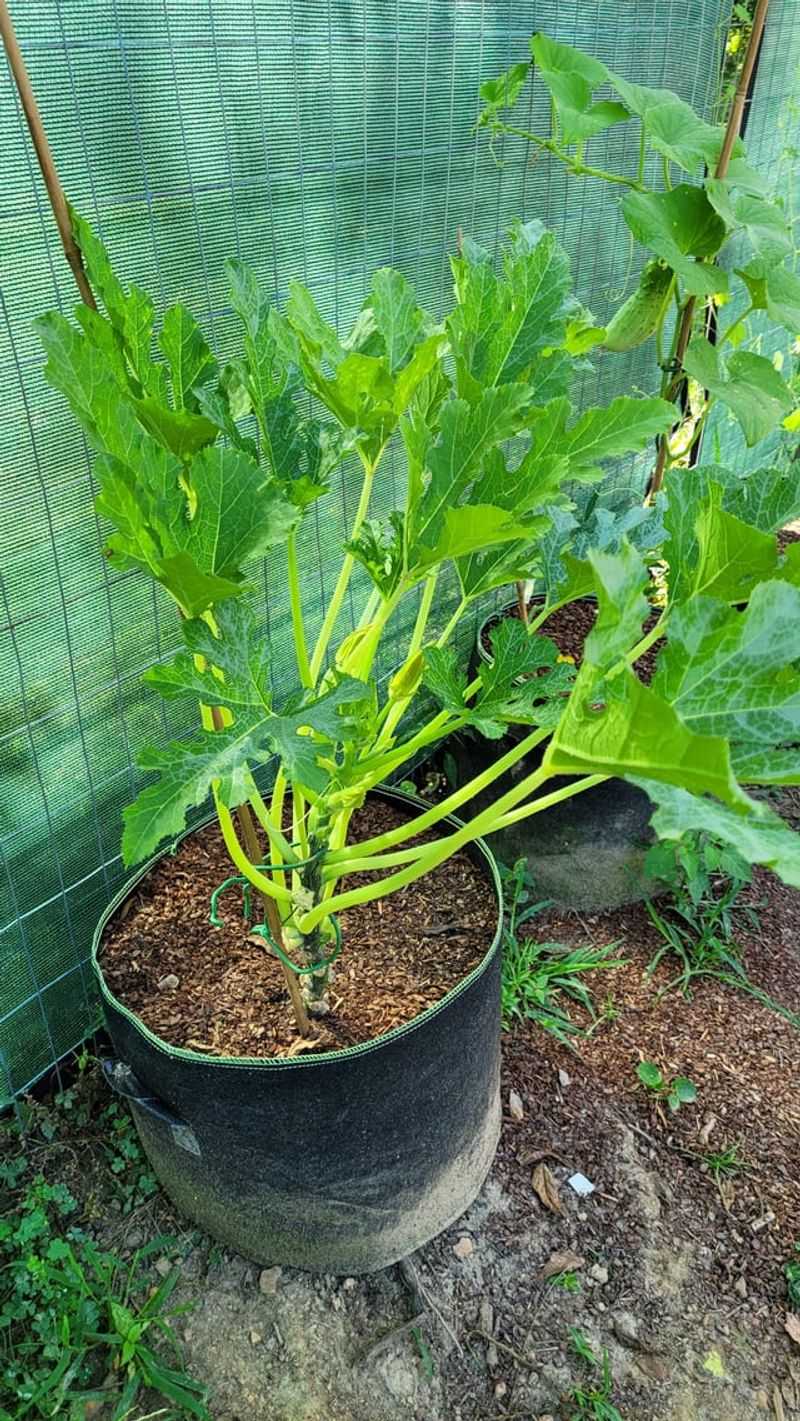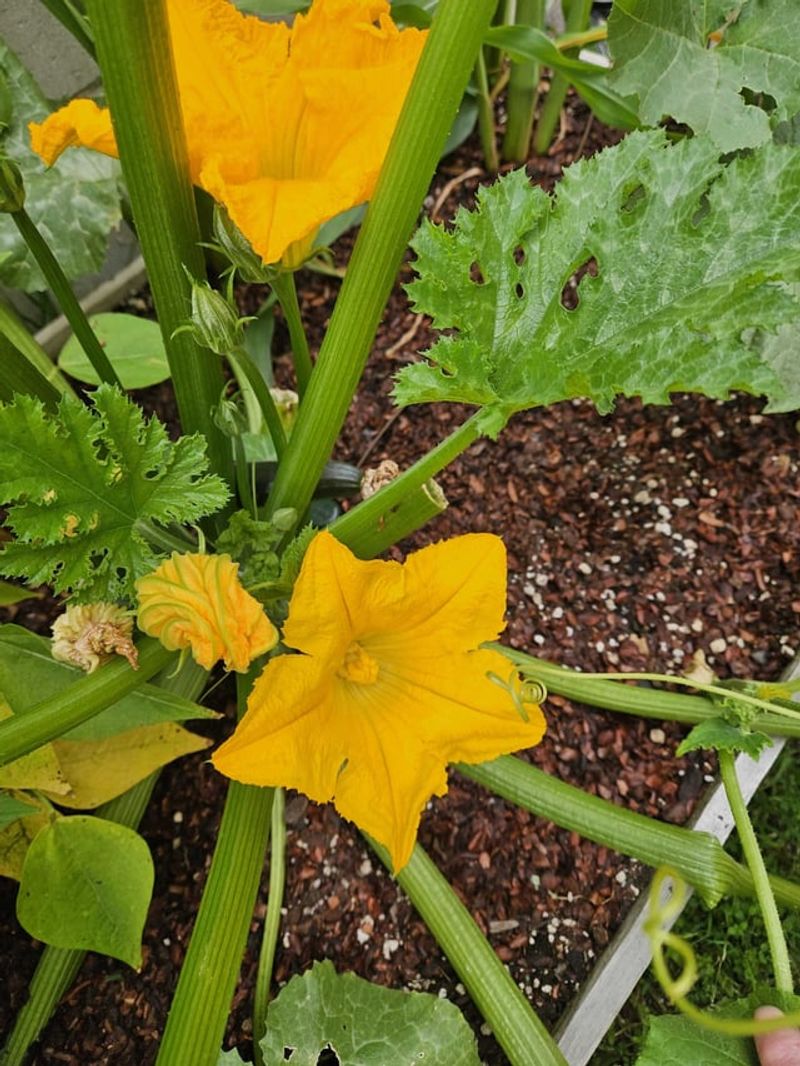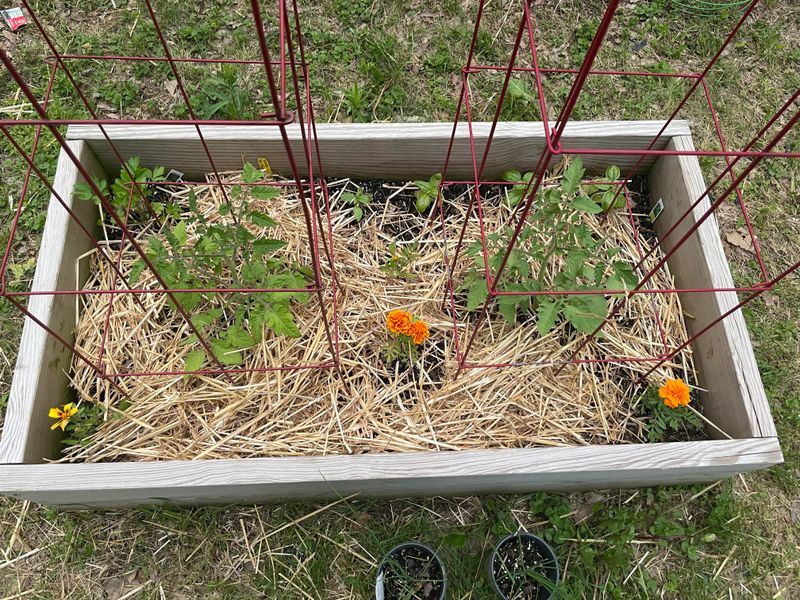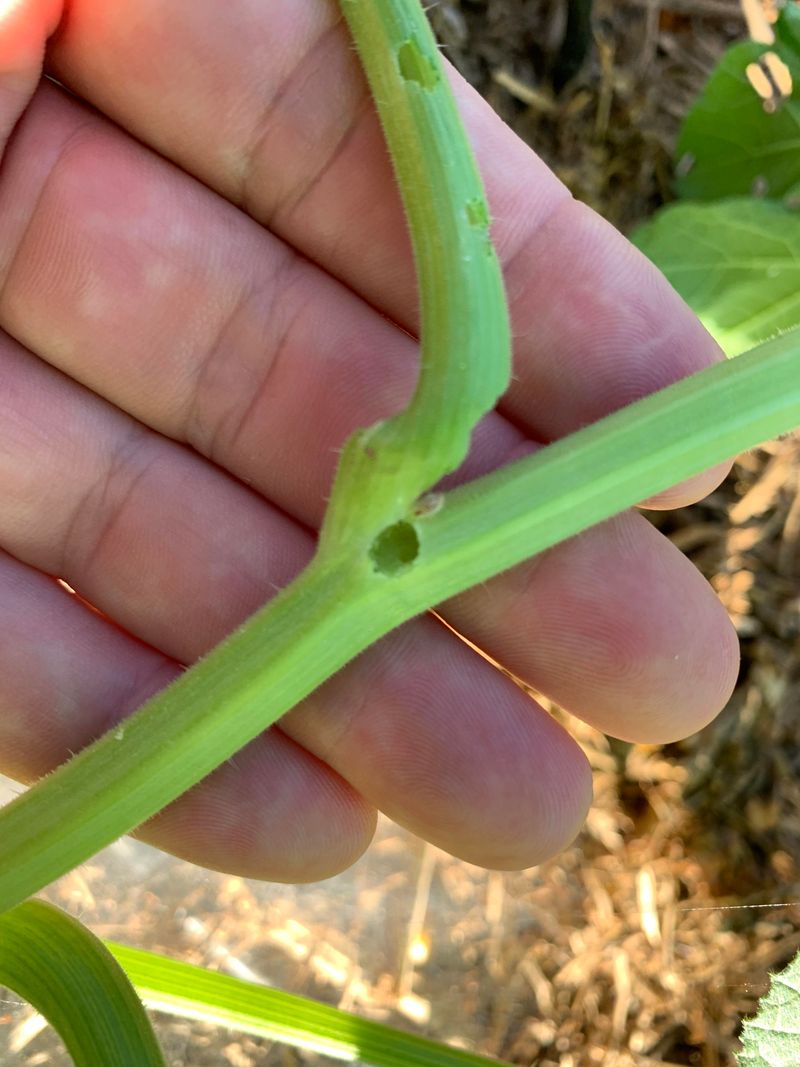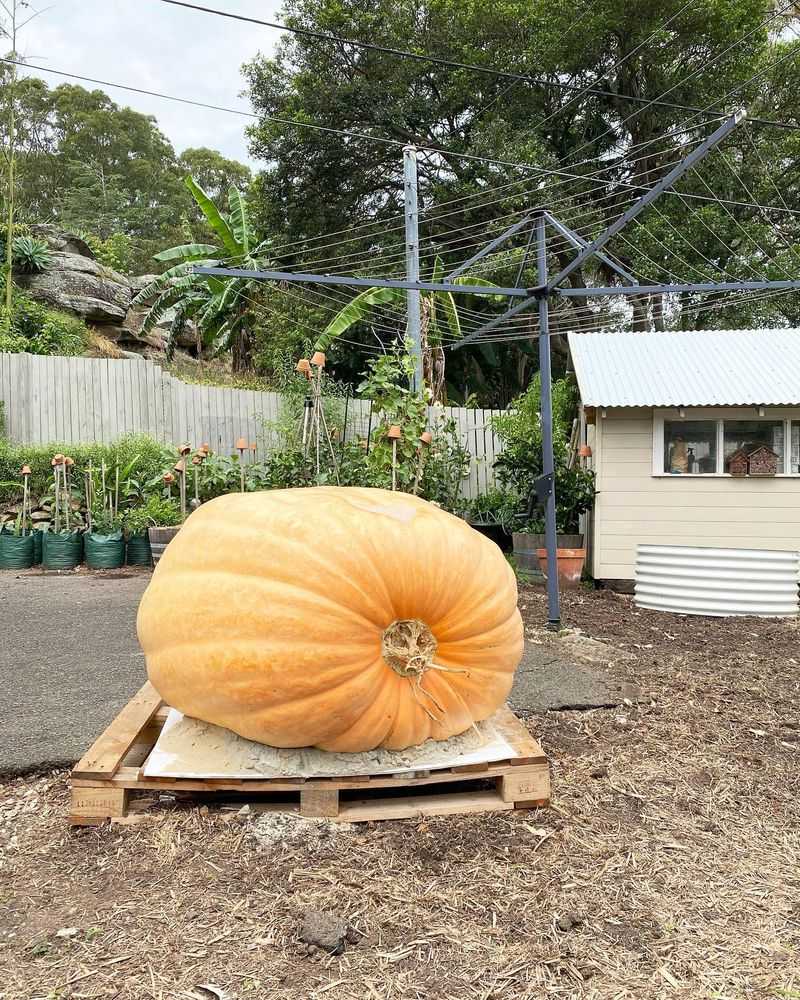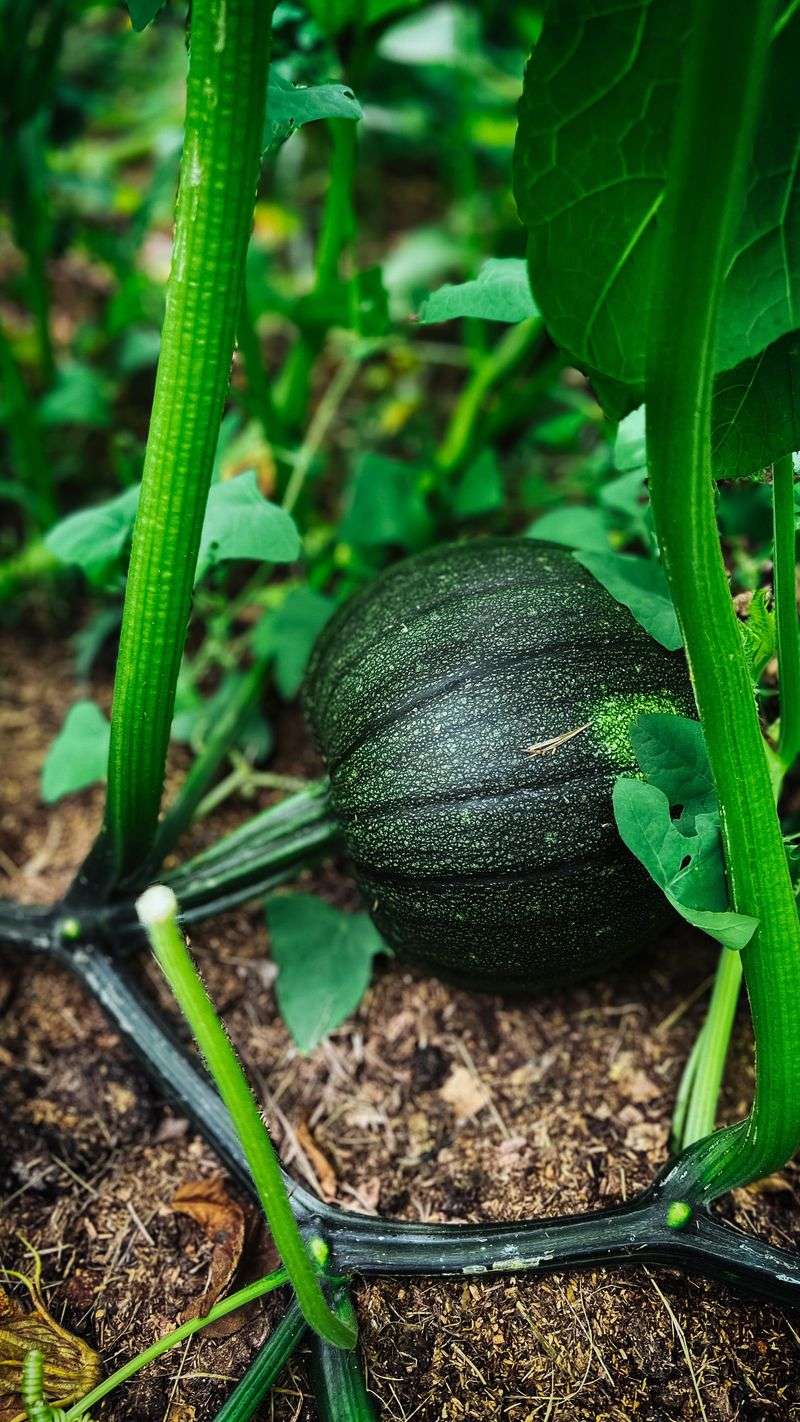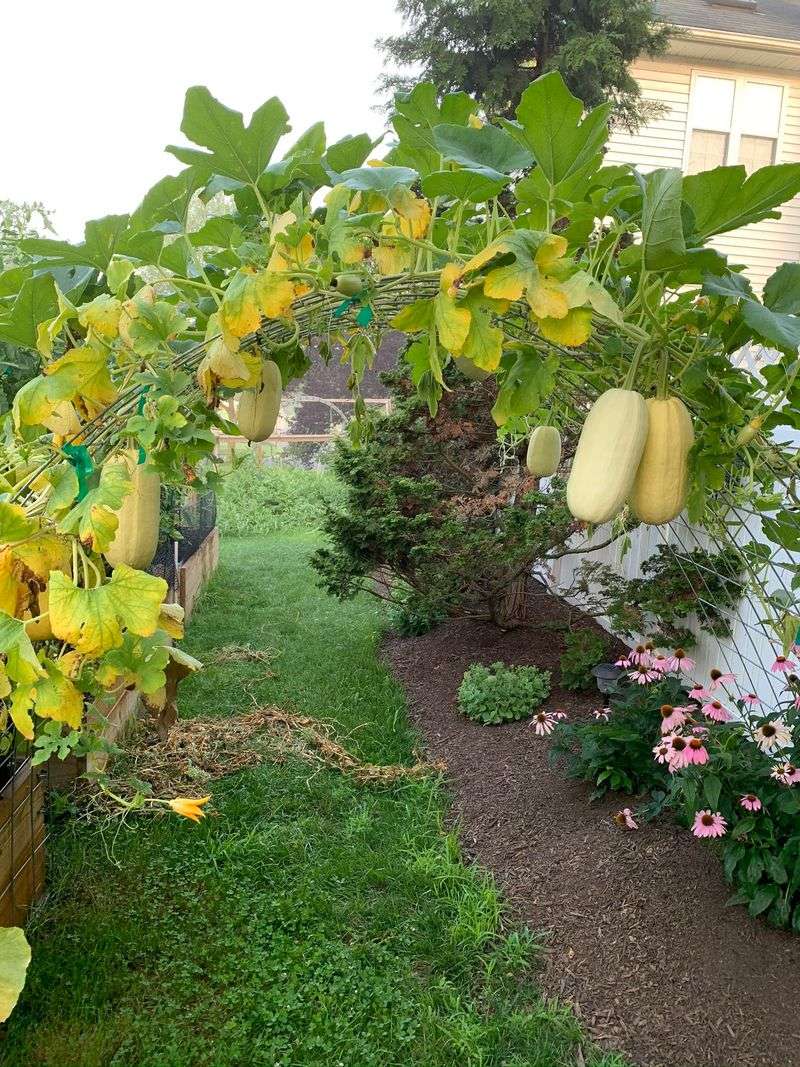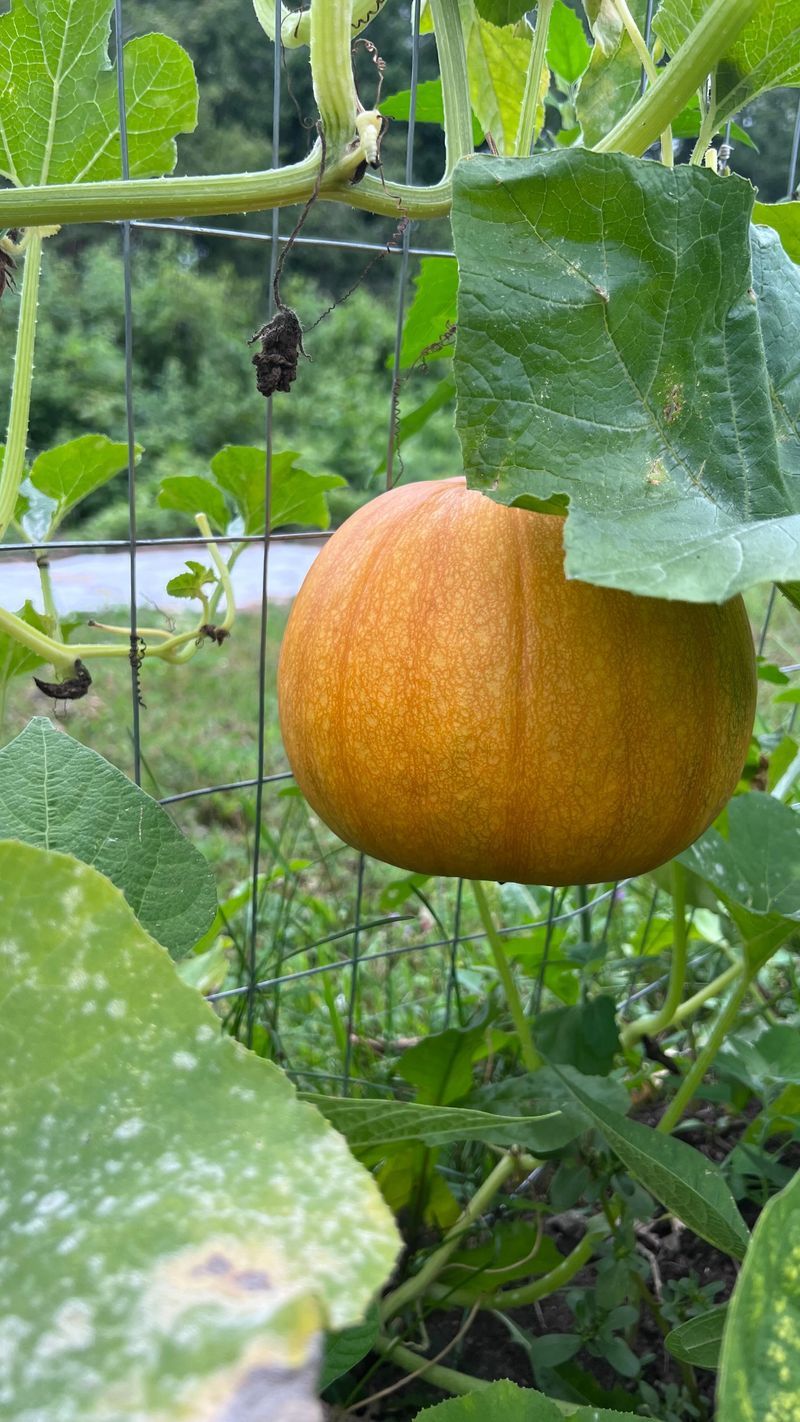Ready to grow a squash garden that’ll leave everyone in awe? These 15 secrets will have you harvesting the biggest squash you’ve ever seen—no complicated steps required!
I’ve tried these tips myself, and let me tell you, the results are seriously impressive. With just a little care and the right approach, you can grow squash that’s the envy of your neighborhood.
Get ready to make this year’s harvest your best one yet!
1. Start With The Right Seeds
Heritage varieties often produce the most impressive squash specimens. Look for names like ‘Atlantic Giant’ for pumpkins or ‘Blue Hubbard’ for winter squash if you’re aiming for record-breakers.
These specialized varieties have been carefully selected over generations specifically for their size potential. Don’t waste garden space on ordinary varieties when these champions can give you truly spectacular results with the same amount of work!
2. Soil Preparation Is Everything
Squash plants are notorious feeders that demand nutrient-rich soil to reach their full potential. Mix in plenty of well-rotted manure or compost at least two weeks before planting to create the ultimate growing environment.
The perfect squash soil should feel loose and crumbly, never compacted. Consider getting a soil test to identify any specific deficiencies – addressing these early can make the difference between good and truly spectacular harvests.
3. Plant At The Perfect Time
Timing matters enormously when growing championship squash. Wait until soil temperatures reach at least 65°F before planting seeds directly in the garden. Jumping the gun leads to slow growth and struggling plants.
For northern gardeners, starting seeds indoors 3-4 weeks before your last frost date gives plants a head start. Just be careful not to disturb the roots when transplanting – squash seedlings hate having their roots disturbed and will sulk for weeks!
4. Create Squash Hills
Mounding up soil into small hills provides multiple benefits for growing massive squash. These raised areas warm up faster in spring, promoting faster growth right from the start. They also improve drainage, preventing the root rot issues that plague many squash plants.
Make each hill about 12 inches high and 2 feet across. Space hills at least 6 feet apart – those vines will spread far more than you expect! This technique mimics how indigenous gardeners grew record squash for centuries.
5. Water Deeply But Infrequently
Shallow watering creates shallow roots, but deep watering encourages roots to grow downward, accessing more nutrients and moisture. Give each plant about 1-2 gallons of water weekly, applied directly to the soil, never the leaves.
Morning watering allows foliage to dry quickly, preventing powdery mildew problems. Consider using soaker hoses or drip irrigation to deliver water exactly where needed. This consistent moisture supply keeps plants growing steadily toward record-breaking size.
6. Feed Regularly With The Right Nutrients
Monster squash requires monster feeding schedules. Apply a balanced organic fertilizer when plants first start growing, then switch to a high-phosphorus formula once flowering begins to encourage fruit development.
Many championship growers swear by weekly applications of compost tea – it’s like a vitamin smoothie for your plants! Avoid high-nitrogen fertilizers after flowering starts or you’ll get impressive vines but disappointing fruit. Follow this feeding schedule religiously for show-stopping results.
7. Pruning For Productivity
Strategic pruning redirects your plant’s energy to developing fewer but larger fruits. Once you see small squash forming, select the strongest 2-3 fruits per plant and remove the others. This sounds ruthless but dramatically increases final size.
Remove any new flowers that appear after you’ve selected your keepers. Also trim back excessive vine growth, leaving just enough leaves to feed your chosen fruits. Your plants will put all their growth energy into those few remaining squash instead of spreading it among many.
8. Pollination Power-Up
Hand-pollination virtually guarantees successful fruit set and development. In early morning when flowers open, transfer pollen from male flowers (slender stems) to female flowers (with tiny squash behind them) using a small paintbrush or by touching stamens directly to stigmas.
This simple morning routine dramatically improves fruit set rates. For champion results, pollinate each female flower with pollen from multiple male flowers – this creates genetic vigor that translates to larger fruits. Just five minutes daily during flowering makes an enormous difference.
9. Mulch Magic
A thick layer of organic mulch creates the perfect growing environment for record-breaking squash. Straw, shredded leaves, or grass clippings spread 2-3 inches deep conserves soil moisture and prevents temperature fluctuations that stress plants.
Mulch also keeps developing fruits clean and dry, preventing rot where they touch the soil. As an added bonus, it gradually breaks down to feed your hungry squash plants throughout the season. Just keep it pulled back slightly from stems to prevent rot issues.
10. Pest Prevention Strategies
Squash bugs and cucumber beetles can devastate your dreams of giant squash. Float row covers over young plants until flowering begins to create a physical barrier against these pests. Remove covers once flowering starts so pollinators can reach your plants.
Companion planting with nasturtiums and marigolds naturally repels many squash pests. Weekly inspections of leaf undersides to squish egg clusters breaks the pest lifecycle before damage occurs. Healthy plants can better withstand occasional pest pressure to reach their full size potential.
11. Support Your Giants
As fruits grow larger, they need physical support to prevent stem damage. Place developing squash on upturned flower pots, pieces of wood, or even old towels to keep them off damp soil and distribute their increasing weight.
For truly massive specimens, create hammock-like slings from old t-shirts or mesh bags attached to stakes. This prevents stem breakage that can cut off nutrient flow. Championship growers know this simple trick often makes the difference between good and record-breaking squash.
12. Temperature Management
Squash growth stalls when temperatures drop below 60°F or soar above 90°F. Protect young plants with cloches or water-filled protection devices like Wall O’ Water in spring. These mini-greenhouses trap heat and accelerate early growth.
During summer heat waves, create temporary shade with old sheets or specialized shade cloth. Maintaining optimal growing temperatures extends your squash’s active growth period. The longer they grow, the bigger they get – it’s that simple!
13. Rotation Matters
Never plant squash in the same spot year after year. Disease organisms build up in soil, waiting to attack your new plants. Establish a four-year rotation schedule for all cucurbits (squash, cucumbers, melons) to break disease cycles.
Keep detailed garden maps to track where squash family plants have grown. The healthiest plants produce the biggest fruits, and rotation is your best defense against soil-borne diseases. Previous legume plantings make ideal spots for this year’s squash patch.
14. Weed Competition Elimination
Weeds steal water, nutrients, and sunlight your squash plants need to produce record-sized fruits. Create a weed-free zone extending at least 2 feet in all directions from each plant. Regular shallow cultivation prevents weeds without damaging shallow squash roots.
Use cardboard or newspaper layers under mulch as an extra weed barrier. This combination approach creates the competition-free growing environment championship squash requires. Just minutes of weekly weed patrol prevents the resource theft that limits your squash’s growth potential.
15. Harvest Timing Tricks
Summer squash grows biggest when harvested young and frequently. Counter-intuitively, picking small fruits stimulates plants to produce more and larger subsequent fruits. Check plants daily during peak season – zucchini can double in size overnight!
Winter squash needs maximum vine time to reach full potential. Allow fruits to remain on vines until rinds harden completely and stems begin to dry. Harvesting too early stunts final size, while perfect timing results in those blue-ribbon giants that impress everyone.

